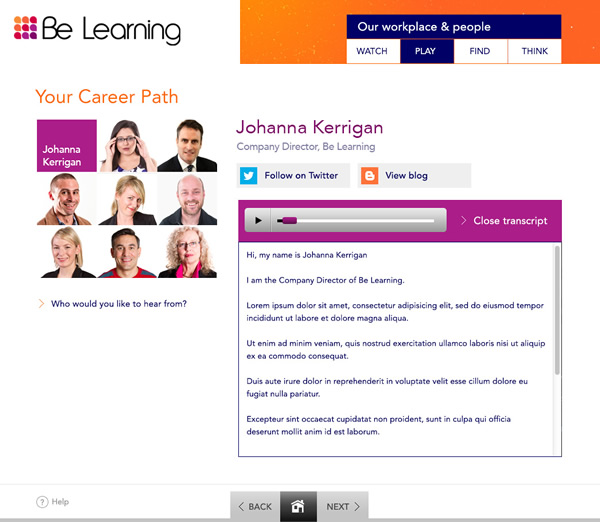ATD Blog
Creating Digital Onboarding Experiences that Stick
Mon Oct 14 2013

Gone are the days when new employees were expected to fend for themselves until there was time for that three-hour, face-to-face onboarding session. Gone are the days when it is okay to spend the first few weeks exploring the organizational landscape before a new employee is expected to add value. And gone are the days when a “generic” onboarding program could cut the mark!
What hasn’t changed in the world of a “new employee” is that their managers are probably too busy and that their colleagues are scrambling to meet project deadlines. And new workers still need to connect to the new organization and hit the ground running—ASAP!
This is where technology, more specifically “digital onboarding,”can play a pivotal role in offering more seamless, painless, and effective support for new employees.
Are there best practices in digital onboarding?
If the key is getting a new worker up-to-speed with the culture, relate to the brand, and have access to all the tools they need for a “smart” start, the answer would be yes. When designing such experiences, follow this four-step process:
Build clarity: Help new employees understand the “why” of work. Anything that kills uncertainty is what we are talking about. What’s in it for them? What will they be learning about? How will they learn? What does the outcome look like at the end of the induction journey?
Connect the dots: Go deeper and facilitate the new employee to begin to both contemplate and connect. What does the organization stand for? What are the values, the vision and the strategy? What is the DNA of the brand? What are the skills they are required to learn?
Lead them to the tools: Help new employees soak up the skills. Where do they go for information? What are the key frameworks? How to use the learning in day-to-day work? How to access support?
Measure the contribution: How will success be measured? Can they self-track their learning journey? What results are they working towards? How do these results translate into bottom-line performance?
Onboarding through exploration and interaction
Everything around us focuses on being immersive: the gaming apps on our touch screen phones, our social media environments like Facebook or Twitter, and even the multiple ways in which we consume motion picture now. So why should learning experiences be any different?
Dynamic and media-rich onboarding experiences not only bring content to life, but also help learners engage with them. Here are some key techniques to keep in mind.

Out-of-the-box instructional design. Having an approach to defining onboarding activities is key to success. Throwing in safety, compliance, process, procedures, policies, and organizational structure in an e-learning authorware template will not engage and inspire new employees.
Have a modular approach, but not a monotonous one. A content map with some fun and frills is what we are talking about here. The main thing is to give learners a variety of activities to engage them. For example, a diversity module could include
an exploration area much like blog posts for policies
an interaction area delivered through “chose your own adventure” scenarios, in which learners get to practice behaviors
an assessment in the form of a game
a virtual diary for reflection on their learning.
(Watch this for an innovative onboarding design success story.)
Embed learning. As a concept pervasive learning is driven by technology and social learning theory—and that’s why it is effective in embedding just-in-time learning as part of an onboarding experience. Setting work-related daily challenges, frameworks to help accomplish meeting outcomes, infographic pop-ups with brand messaging are all effective ways to embed learning through a mobile or a web-based learning solution.
Gamify practice. Progression, completion, competition, comparisons, statistics, and badges – are all motivators that help make a learning experience interactive and fun! When implemented with tact and careful thinking, gamification has the potential to make learning stick.
Gamification also is an effective tool for informal assessments and recording learning behaviors. In an onboarding experience, anything that needs practice and mastery can be gamified, including products and services, compliance, policies, and so forth.
Implement the informal. Nothing would engage new employees more than a subconscious transition into the company. By tapping into the self-initiated pace of a learner, there are amazing possibilities to not only make a difference, but also revolutionize the learning culture as part of the induction process itself.
With mobile, for instance, this transformational possibility is now a reality. Set the environment for learners to find mentors, connect with colleagues, contribute to rich discussions, and join internal communities. In other words, set them up to be able to adapt.
Tell a story. Yes, tell them a good story—wherever you can, whenever you can.! Make a film, an animation, a motion graphic, or an e-comic to engage learners about any process, problem, behavior, mindset, or transformation. Digital learning has not killed the good old video for learning; it has increased its possibilities. In most instances, convincing narrative and believable characters (or a voice over) is all you need.
Bottom line
Here are some quick tips for creating a digital onboarding experience that will hit the mark with new employees.
Do not overload the learner. Focus on the key messages and learning outcomes. What is it that your new starters will remember and how do you want them to “be.”
Stay on brand: Create a space for your new starters where they get the same brand experience as your customers.
Create the WOW factor: In order to avoid attrition it is crucial to grab attention and reassure that they have made the right decision.
Mirror their world: Technology plays an important role in our digital lives, so you may want to go multiplatform with your onboarding solutions.
Most importantly, believe in wanting to make a change, innovate, and open the space for an enriching creative experience.
